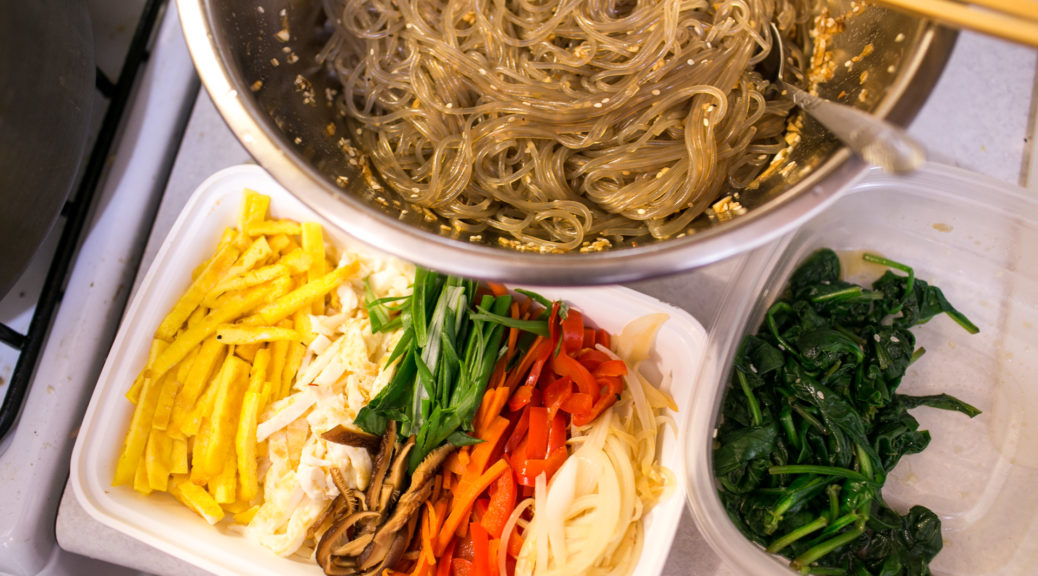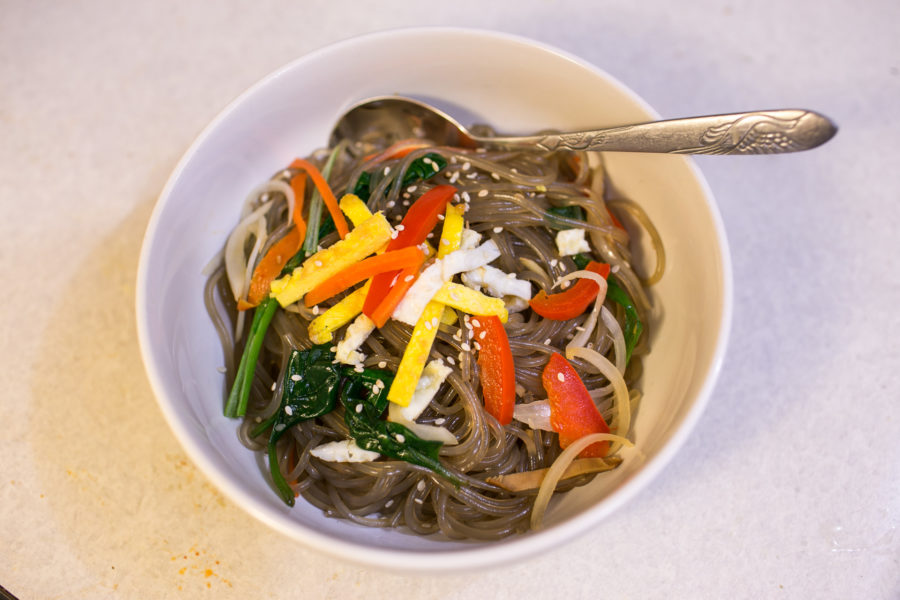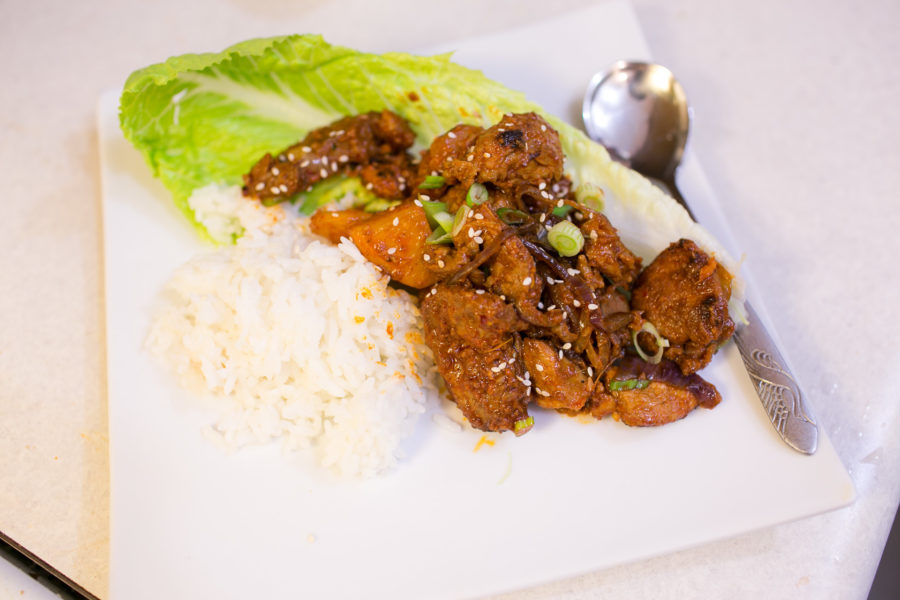Korean food time! Korean restaurants often start with a big collection of banchan, little side dishes like pickled veggies, preserved seafood, and other little things. Feasible on a restaurant scale (or a habitually Korean-eating household, I guess!), but I’m just going to make one: japchae, the glass noodles. I’ll make it up by making it super colorful.
Japchae (Korean glass noodles)
- 250g sweet potato starch noodles, boiled for 7 minutes, then rinsed in cold water, then mixed with
- 3 tbsp soy sauce, 1 tbsp honey, 1 tbsp brown sugar, 1 tbsp sesame oil, 2 tsp minced garlic, 2 tsp roasted sesame seeds, pinch pepper.
- Garnish with:
- Lean beef (sirloin or rib eye) sliced small then marinated in soy sauce, garlic, sesame oil, rice wine
- Blanched spinach in sesame oil, garlic, soy sauce.
- Sliced fresh shiitake mushrooms marinated in noodle sauce.
- Carrots julienned, sliced onion, bell pepper julienned, scallions in strips, stir fried.
- Jidan: Omelette-like fried egg yolk, fried egg white, sliced into matchsticks.
- Sesame seeds
To use up more of my copious amount of gochugaru, we cooked some spicy pork. Somewhere I read that typically beef bulgogi is cooked non-spicy, and pork “bulgogi” is cooked spicy. Can this be verified?
Korean Spicy Pork
- Blend together 5 tbsp gochujang, 1/4 cup asian pear (~1/6 huge pear), 6 cloves garlic, 1” ginger, 1 tbsp soy sauce 1 tbsp sesame oil, 1 tbsp sugar, 1 tbsp rice wine, 2 tbsp gochugaru.
- Marinate 2 lb pork shoulder, cut to thin strips
- Saute 1 onion thinly sliced, 2 scallions white parts sliced, 1 korean green chili pepper until softened. Reserve.
- Saute 1 packed cup kimchi drained. Reserve.
- In batches, brown pork until cooked through and starting to brown.
- Combine everything, sprinkle with sesame seeds.
- Serve with lettuce, gochujang, rice.


